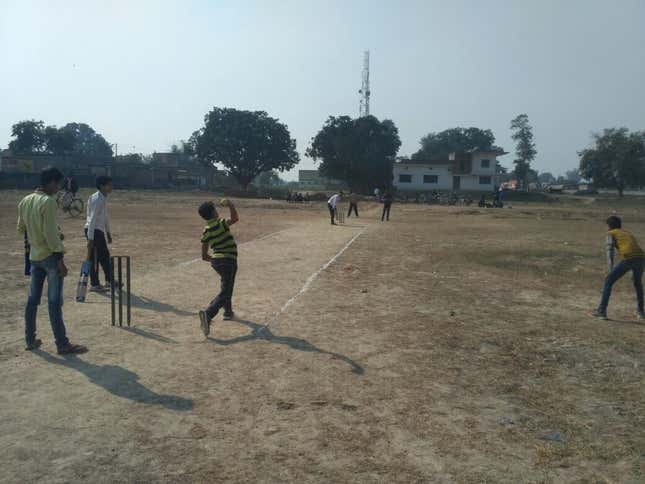In 1954, the same year that the US Supreme Court banned segregation in the Brown v. Board of Education case, psychologist Gordon Allport proposed an idea he called the “social contact” theory.
Allport hypothesized that if two different demographic groups interact in a setting where they have equal status, are given common goals, work together towards those goals, and have support from authorities, they will develop more positive feelings towards each other. He emphasized the importance of these conditions: After all, interacting in antagonistic circumstances could fuel stereotypical beliefs.
These basic tenets of this theory may seem blindingly obvious, but we still don’t have conclusive evidence on how or even whether it might work.
“Social contact” theory has been subject to more than 500 studies since Allport first suggested it. Researchers have investigated, for example, racial relationships in schools with white and South Asian students in the UK, whether white students playing sports with black teammates in the US show less prejudice, and whether those who spend time with people with disabilities have a less prejudiced attitude towards disability.
The results are decidedly mixed. Many evaluate existing circumstances where two social groups mix, which means they don’t take into account the counter-hypothesis: That some people have chosen to interact with another group because they have less prejudice, rather that the act of mixing has actively decreased their prejudice. Other studies are based in labs, which hardly reflect real-life circumstances. Much of the research relies on participants self-reporting their prejudicial behavior, which isn’t the most reliable indication of bias. And, finally, the vast majority of the studies fail to evaluate long-term shifts in attitudes.
A 2018 meta-analysis could only find 27 papers that met the researchers’ criteria for inclusion: randomly assigning participants to social contact situations and evaluating prejudice at least one day after the intervention began. The authors of the meta-analysis decided that even these 27 studies could not determine if the groups had equal status or worked towards a shared goal. “Given the narrow scope and mixed findings of the policy-relevant contact literature,” they write, “we conclude that the jury is still out regarding the contact hypothesis and its efficacy as a policy tool.”
Globalizing the global game
Since the publication of that meta-analysis, several researchers have stepped into this void, creating on-the-ground field experiments embedded in daily life, rather than secluded in the laboratory. One such paper, published by the author Salma Mousa last year, created a soccer league from scratch in Iraq in 2017, following the fall of ISIS, and randomly assigned the teams to include either Christian or Muslim players.
Mousa, a political science PhD student at Stanford University, and her colleagues went to Ankawa, a Christian area of Erbil, the capital of Iraqi Kurdistan. Many Iraqis have sought refuge in Erbil from the civil violence caused by ISIS invasion. The city’s many soccer teams, and life in general, are segregated by religion; Christians displaced by ISIS are reluctant to associate with Muslims who share the religious background of their persecutors. To see if social contact could reduce bias, Mousa and her colleagues randomly chose 14 amateur male soccer teams, each founded by displaced Christians Iraqis, to join a newly formed league. There were several incentives to encourage participation: The league came with professional referees, reserved fields, and trophies awarded to the top three teams.
Each team started with 10 players and was told they’d need to take on four more players in order to qualify for the league, and that these players would be assigned by the researchers. Seven teams were randomly selected to receive four Sunni Muslim players, while the others were assigned four extra Christian players. The league kicked off at the end of March 2017, and ended its season in the beginning of June 2017.
At first, there were plenty of signs of prejudice. Christian players frequently said, “you can’t trust Muslims,” and loudly complained if a Muslim player turned up late, Mousa wrote in her paper. But, over time, researchers noticed the space between Muslims and Christians on the bench narrowing. In the fifth week, Muslims on one team said they were struggling to pay for taxis to the field on game days, and their Christian teammates quickly agreed to help cover the costs, despite being on relatively low salaries themselves. Towards the end of the experiment, several team captains suggested that all teams should be integrated; others proposed allowing all-Muslim teams to join the league. And, during the UEFA Champion’s League final on June 3, 2017, Christian players invited their Muslim teammates to watch the game together, without any prompting from the research staff.
When Mousa organized a social dinner for all the league’s players, those on mixed teams, she wrote in the paper, were both more likely to attend and to invite their families. Those on mixed teams also said they’d be more likely to participate again in the future. And, four months after the league ended, Christians who’d been on mixed teams were over three times more likely than the control group to continue playing with Muslims.
This is only the pilot; Mousa has since scaled up her experiment to three leagues involving more than 450 participants, including the coaches. One league in the scale-up took was based in Ankawa, Erbil, while two others were in Qaraqosh, 70 km (43 miles) away. (Most of the participants are from Qaraqosh and have returned to the city after it was liberated from ISIS.) These leagues kicked off at the end of August 2018.
Resolving a sticky wicket
Elsewhere in the world, researchers were working on a similar experiment using another hugely popular sport. In the northern Indian state of Uttar Pradesh, Matt Lowe, an economics postgraduate student at MIT at the time (he’ll soon be joining University of British Columbia as economics professor), recruited over 12,000 men to play in an eighth-month cricket league. His goal was to determine how social contact affects caste relations in India.
Participants of the experiments came from three broad castes, based on government-mandated definitions: 33% were from the “general caste” category, 35% from OBC (“Other Backwards Class”), 32% from SC/ST (“Scheduled Castes and Scheduled Tribes”). All those within each class have a similar economic status. In his paper, Lowe notes that caste discrimination is common in Uttar Pradesh: “37% of upper-castes openly admit to practicing untouchability (Desai et al. 2011), and villages typically display stark social, marital, and geographic caste segregation.” Untouchability is the traditional Indian practice of treating members of certain low castes as so impure as to bar them from mingling with those of higher castes, avoiding physical touch and restricting their use of public facilities and services like roads, wells, and even barbers.
One third of the 1,260 participants were in a control group where they were rarely used as substitute players, while the other two thirds were assigned to five-player teams with between zero and four teammates from other castes. Lowe notes that it’s harder to play cricket with five players rather than the traditional 11, but not impossible; for example, while bowling, one player bowls, another plays wicket keeper, and there are three fielders. Substitutes were used as a control group as they were clearly willing to take part in a study that could involve interaction with other castes, but did not actually benefit from such interactions.

At the end, Lowe asked the participants to identify which of their teammates they considered a friend. He found that those who had four cross-caste teammates from had 40% more cross-caste friendships than those with none. Participants were also asked to choose four other players to be future teammates, and those who played with four teammates from other castes were 62% more likely to choose those from other castes than those who only played with those from their caste.
There was also a difference between those who played in the league, and therefore had some interaction with other castes, versus those who were in the control group of subs and didn’t have a chance for sustained interactions. (Even those who only had team members from their own caste still interacted with other castes by playing against them, as well as interacting with spectators and umpires from other castes.) Those in the league had 45% more cross-caste friendships compared to the control group, were 23% more likely than the control group to choose future teammates from other castes.
The impacts went beyond the cricket field. “When I have teammates from another caste, I not only become friends with them, I am now also more likely to want to interact with the people from other castes that are not on my team,” says Lowe.
Playing the field
These on-on-the-ground experiments mark a new phase in efforts to evaluate psychological theories. Decades ago, field experiments were the norm. But because they often had sloppy standards and poor ethics, there was a major shift towards focusing on lab studies, which create perfect conditions and therefore neater results. Plenty of findings worked in the lab, Mousa says, but “we find these things don’t actually work in the field.”
Meanwhile, much of the more recent work testing psychological theories in the field has been conducted by researchers from other departments, such as political science and economics. But Mousa notes that there’s growing recognition among psychology researchers that theories have to be field-tested.
Of course, field experiments comes with challenges. In a trial match for the India cricket study, Lowe says, one match ended with anger over an umpire’s bad calls. Both sides were shouting at each other and came close to violence, says Lowe, which was of course hugely disruptive to the study. As a result, they introduced a new screening process to improve the quality of the umpiring crews.
Both the soccer and cricket researchers had to prove their respective institutional review boards that their studies would be conducted ethically. For example, it’s essential to show that an experiment wouldn’t withhold a service that would benefit people, assuming there’s no resource constraints. In her experiment, Mousa didn’t have the resources to provide a soccer league to everyone in Erbil, and so her experiment passed that condition.
Though promising, the two experiments do not definitively show that contact can reduce prejudice. Another 2018 study organized 16 weeks of computer-training classes for low-income Christian and Muslim men in northern Nigeria; some of the classes were mixed, and some were homogeneous. The authors found that contact led to “no changes in prejudice.” Of course, there are differences between a shared computer-training class and being on the same sports team; but all three trials were randomized field experiments designed to test the same concept.
Field experiments are noisy, says Mousa. It’s not yet clear what, specifically, was so effective about the sports experiments, or if they will replicate across geographical regions and circumstances. “It might just be that these effects are highly contextual,” she says. More broadly speaking, researchers don’t yet know if there’s any certain type of contact, or particular condition, that is universally effective at reducing prejudice. So far, the most inarguable results of these field experiments reflect some of the messy psychological experiences of daily life: It’s not easy to identify one neat rule.
